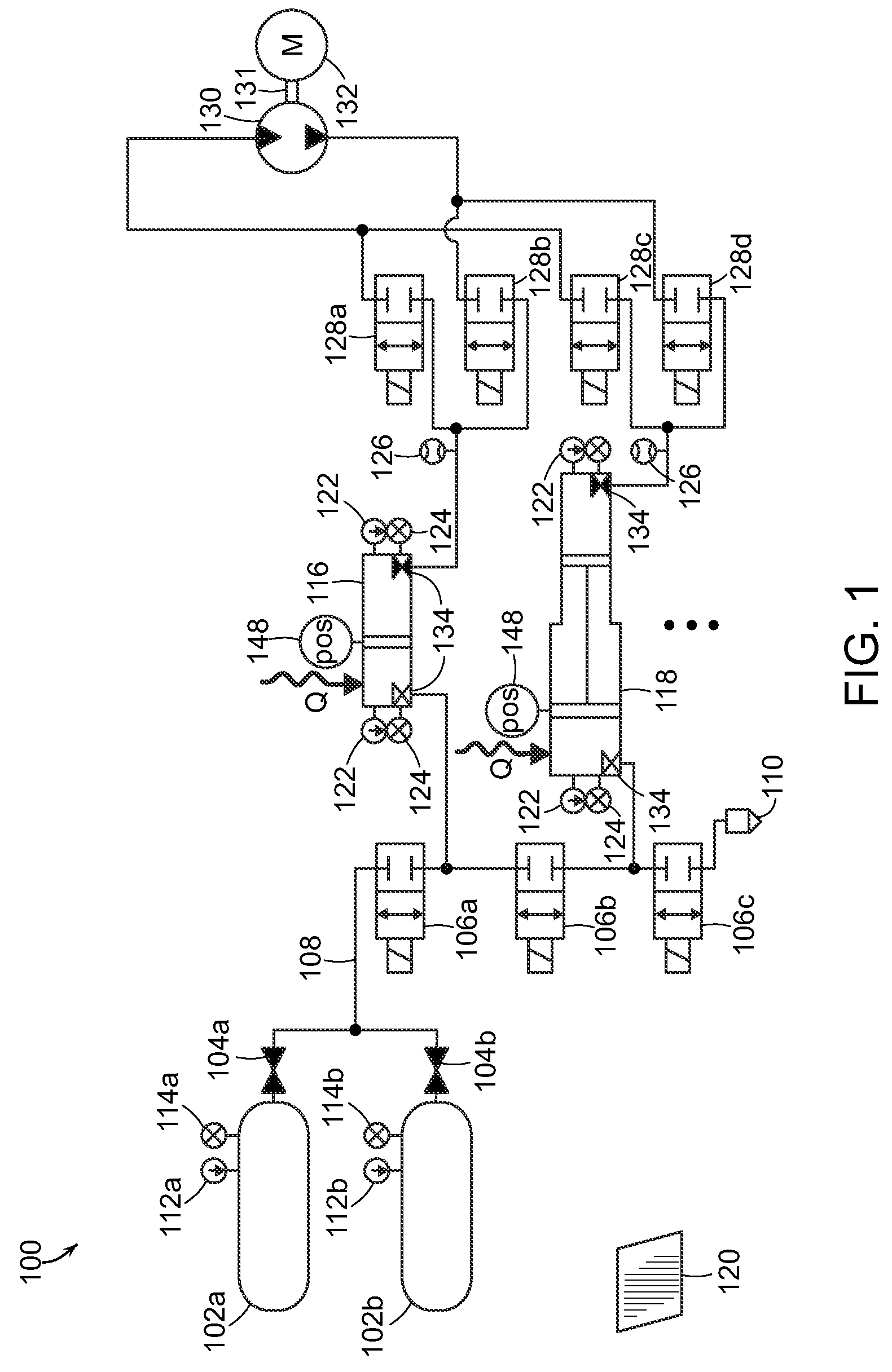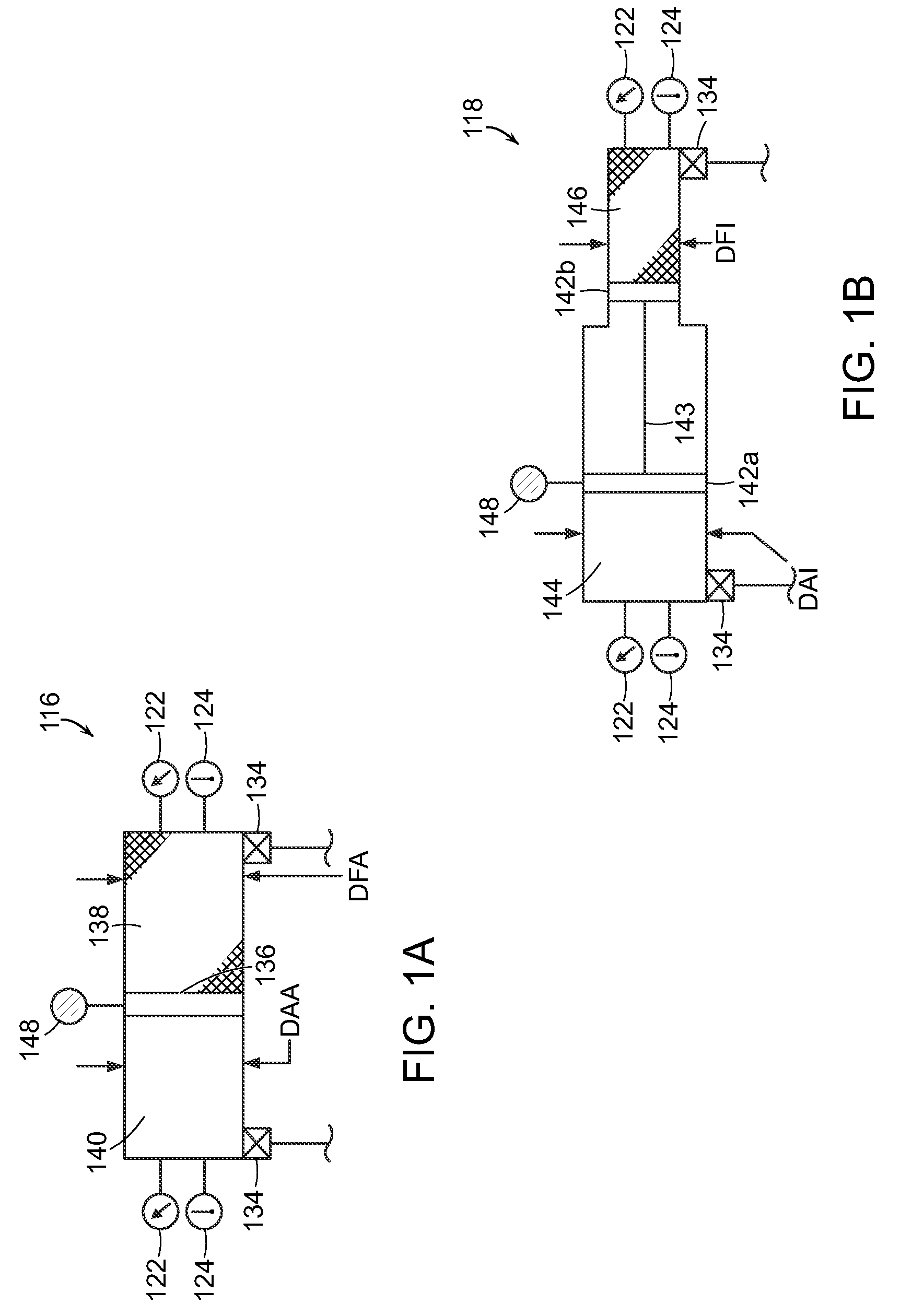Systems and methods for energy storage and recovery using compressed gas
a technology of energy storage and recovery, applied in the field of energy storage, can solve the problems of inadvertent brownout and blackout, natural gas burning, and expensive fuel sources, and achieve the effect of increasing energy density
- Summary
- Abstract
- Description
- Claims
- Application Information
AI Technical Summary
Benefits of technology
Problems solved by technology
Method used
Image
Examples
Embodiment Construction
[0063]In the following, various embodiments of the present invention are generally described with reference to a single accumulator and a single intensifier or an arrangement with two accumulators and two intensifiers and simplified valve arrangements. It is, however, to be understood that the present invention can include any number and combination of accumulators, intensifiers, and valve arrangements. In addition, any dimensional values given are exemplary only, as the systems according to the invention are scalable and customizable to suit a particular application. Furthermore, the terms pneumatic, gas, and air are used interchangeably and the terms hydraulic and fluid are also used interchangeably.
[0064]FIG. 1 depicts one embodiment of an open-air hydraulic-pneumatic energy storage and recovery system 100 in accordance with the invention in a neutral state (i.e., all of the valves are closed and energy is neither being stored nor recovered. The system 100 includes one or more hi...
PUM
 Login to View More
Login to View More Abstract
Description
Claims
Application Information
 Login to View More
Login to View More - R&D
- Intellectual Property
- Life Sciences
- Materials
- Tech Scout
- Unparalleled Data Quality
- Higher Quality Content
- 60% Fewer Hallucinations
Browse by: Latest US Patents, China's latest patents, Technical Efficacy Thesaurus, Application Domain, Technology Topic, Popular Technical Reports.
© 2025 PatSnap. All rights reserved.Legal|Privacy policy|Modern Slavery Act Transparency Statement|Sitemap|About US| Contact US: help@patsnap.com



